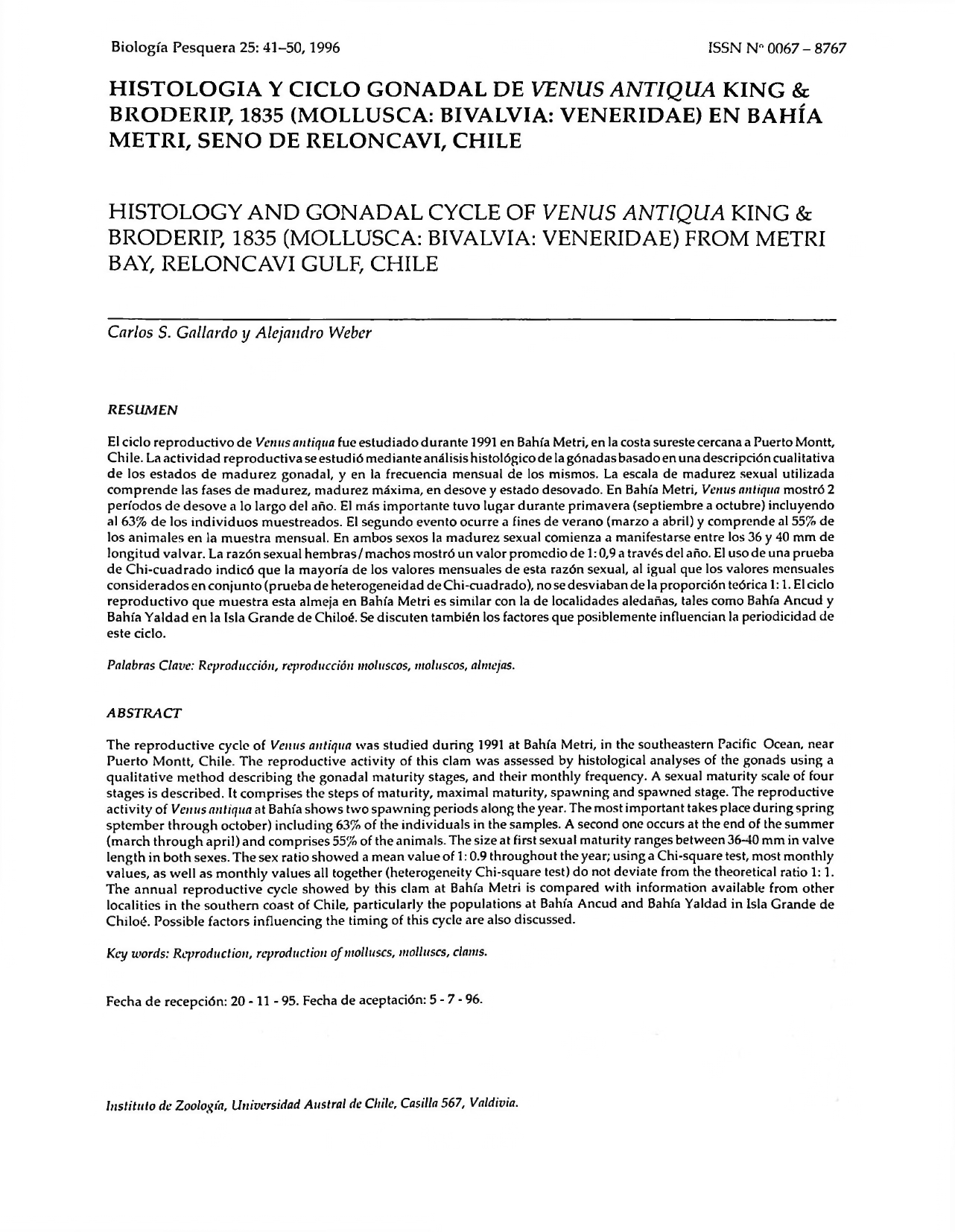HISTOLOGY AND GONADAL CYCLE OF VENUS ANTIQUA KING & BRODERIP, 1835 (MOLLUSCA: BIVALVIA: VENERIDAE) FROM METRI BAY, RELONCAVI GULF, CHILE
DOI:
https://doi.org/10.21703/0067-8767.1996.25.2593Keywords:
Reproduction, reproduction ofmolluscs, molluscs, clams.Abstract
The reproductive eyele of Venus antiqua was studied during 1991 at Bahía Metri, in the southeastern Pacific Ocean, near Puerto Montt, Chile. The reproductive activity of this clam was assessed by histological analyses of the gonads using a qualitative method describing the gonadal maturity stages, and their monthly frequeney. A sexual maturity scale of four stages is described. It comprises the steps of maturity, maximal maturity, spawning and spawned stage. The reproductive activity of Venus antiqua at Bahía shows two spawning periods along the year. The most important takes place during spring sptember through october) including 63% of the individuáis in the samples. A second one occurs at the end of the summer (march through april) and comprises 55% of the animáis. The size at first sexual maturity ranges between 36-40 mm in valve length in both sexes. The sex ratio showed a mean valué of 1:0.9 throughout the year; using a Chi-square test, most monthly valúes, as well as monthly valúes all together (heterogeneity Chi-square test) do not deviate from the theoretical ratio 1:1. The annual reproductive eyele showed by this clam at Bahía Metri is compared with Information available from other localities in the southem coast of Chile, particularly the populations at Bahía Ancud and Bahía Yaldad in Isla Grande de Chiloé. Possible factors influencing the timing of this eyele are also discussed.


